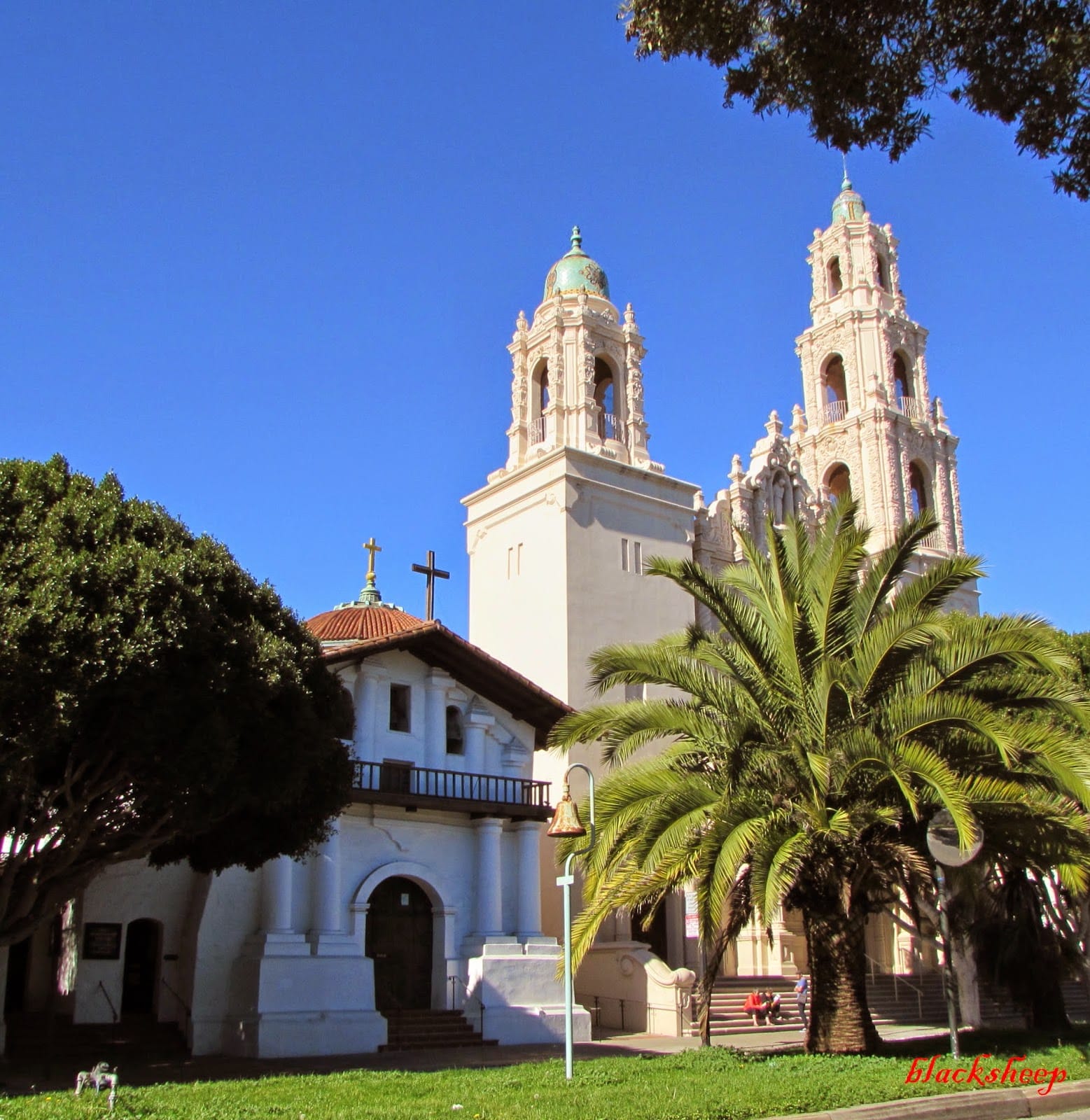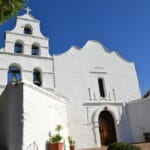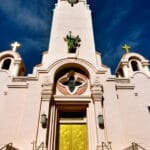A Journey Through Time: San Francisco’s Oldest Mission
Mission San Francisco de Asís, affectionately known as Mission Dolores, stands as a timeless landmark, whispering tales of California’s vibrant past. Established in 1776, concurrent with the birth of the United States, this mission isn’t merely the oldest building in San Francisco; it’s a living testament to the city’s rich and complex history. From its humble beginnings as a Spanish outpost to its resilience in the face of earthquakes and cultural shifts, Mission Dolores offers a captivating glimpse into the pioneers who shaped this iconic city.
The Mission’s Enduring Legacy
The original mission church, completed in 1791, showcases the ingenuity of its builders with its simple yet durable design. This structure has witnessed the ebb and flow of history, from Spanish and Mexican rule to becoming part of the United States. Its survival of the devastating 1906 earthquake, a catastrophe that leveled much of San Francisco, underscores its remarkable resilience. The later addition of a grand basilica in 1918 likely reflects the evolving needs of the growing congregation and the changing times.
Today, Mission Dolores is more than a relic; it’s a thriving Catholic parish, a cherished tourist attraction, and the namesake of the vibrant Mission District. Its continuous operation probably stems from a combination of strong community ties, historical significance, and perhaps a touch of luck. Further research might unveil how it weathered such tumultuous periods. The mission’s story is far from over; it continues to adapt and evolve, promising to serve the community in new and meaningful ways.
Experiencing Mission Dolores Today
Beyond its storied past, Mission Dolores pulsates with life in the present. It’s not just a historical landmark; it’s a dynamic hub, deeply intertwined with the fabric of San Francisco.
A Vibrant Parish and Historical Landmark
As an active Roman Catholic parish within the Archdiocese of San Francisco, Mission Dolores continues to be a place of worship, echoing centuries of tradition. Its designation as California Historical Landmark No. 327 underscores its importance to the state’s heritage and likely aids in its preservation. Ongoing efforts to maintain the mission’s structural integrity, especially given San Francisco’s seismic activity, speak volumes about the craftsmanship of its original builders.
Mission Dolores also draws visitors worldwide, eager to explore the foundations of San Francisco. Its location in the vibrant Mission District, a neighborhood that owes its name and unique character to the mission itself, further enhances its appeal. The mission’s future remains unwritten, but its past suggests an ongoing narrative of adaptation and service to the community.
Current Status at a Glance:
| Feature | Status |
|---|---|
| Religious Function | Active Roman Catholic Parish |
| Historical Recognition | California Historical Landmark No. 327 |
| Tourist Attraction | Popular Destination |
| Preservation Status | Ongoing efforts |
| Community Impact | Significant influence on the Mission District |
Our understanding of historical sites like Mission Dolores is constantly evolving. Archaeological research and historical investigations may reveal new insights, changing our perspectives on its past and present.
Unraveling the Mission’s Purpose
Mission San Francisco de Asís, founded in 1776 by Spanish colonizers, played a pivotal role in shaping San Francisco’s development. However, its purpose was multifaceted, extending beyond a single objective.
Conversion, Colonization, and Cultural Transformation
The mission’s primary aim was the religious conversion of the native Ohlone people to Catholicism. This was seen by the Spanish missionaries as a sacred duty, a path to salvation. However, intertwined with this religious zeal were Spain’s colonial ambitions. The mission system served as a strategic instrument for territorial expansion and control, with religious conversion potentially easing the process of subjugation.
Beyond its religious and political roles, Mission Dolores emerged as a bustling social and economic center. It served as a gathering place for the Ohlone, a venue for trade, a center for learning new skills, and a focal point for interaction with the Spanish. The mission’s agricultural activities made it a cornerstone of the local economy.
Another significant aspect was cultural transformation. The Spanish sought to replace Ohlone language, customs, and social structures with their own, believing they were introducing the Ohlone to a “civilized” world. This cultural shift was arguably as impactful as religious conversion, if not more so.
Key Purposes of Mission Dolores:
| Purpose | Description |
|---|---|
| Religious Conversion | Spreading Catholicism among the Ohlone people. |
| Spanish Colonization | Establishing a Spanish presence and claiming territory in Alta California. |
| Social & Economic Hub | Creating a center for trade, agriculture, livestock management, and social interaction. |
| Cultural Transformation | Assimilating the Ohlone into Spanish culture, imposing their language, customs, and societal structures. |
It’s essential to acknowledge the complex and evolving nature of historical interpretation. Different perspectives and ongoing research can reshape our understanding of the mission’s multifaceted purpose.
The Ohlone Experience at Mission Dolores
Life for the Ohlone people at Mission San Francisco de Asís was one of profound change and undeniable hardship. Their traditional way of life was irrevocably altered by the mission system.
Forced Labor and Cultural Disruption
The Ohlone were compelled to live and work at the mission, a system some historians liken to forced labor. Their days were filled with arduous tasks dictated by mission authorities, from agricultural work to construction and maintenance. This regimented lifestyle disrupted their traditional practices, their connection to the land now dictated by the mission’s needs, not their own.
The mission’s impact extended beyond physical labor; it aimed to dismantle Ohlone culture. Traditional ceremonies and rituals were banned, their language suppressed, and children punished for speaking their native tongue. This systematic cultural suppression sought to erase their identity and enforce assimilation.
The introduction of European diseases, to which the Ohlone had no immunity, proved devastating. Epidemics swept through the mission, decimated communities, and added another layer of tragedy to their already difficult situation. Crowded living conditions and poor sanitation likely exacerbated the spread of these diseases.
Resilience and Resistance
Despite these hardships, the Ohlone demonstrated remarkable resilience. Some escaped, returning to their ancestral lands or seeking refuge elsewhere. Others preserved their cultural traditions in secret, passing down stories, songs, and spiritual practices to future generations. Acts of resistance, both subtle and overt, underscore their determination to maintain their identity.
The legacy of Mission San Francisco de Asís is complex and multifaceted. While acknowledging its role in California’s development, it’s crucial to recognize the devastating impact on the Ohlone people. Their story, one of forced labor, cultural destruction, and disease, is interwoven with their resilience and resistance. Ongoing research continues to illuminate this complex period, ensuring their experiences are not forgotten.
Key Features of Mission Dolores:
| Feature | Description |
|---|---|
| Original Church | Built in 1791, this adobe structure showcases the Spanish Colonial Revival style. |
| Basilica | Constructed in 1918, this grand Neo-Gothic Revival building features stunning stained glass. |
| Cemetery | The oldest cemetery in San Francisco, the final resting place for many early settlers, including Ohlone people. |
| Gardens | A peaceful oasis amidst the bustling city. |
Visiting Mission Dolores today is more than a sightseeing trip; it’s a journey through time, a poignant reminder of the forces that shaped San Francisco. Consider exploring the 9/11 Museum Workshop or delve into the history of the Troubles in Northern Ireland through the Bloodlands Book. These experiences offer further insights into the complexities of history and its enduring impact.
- How many days till Feb 3?Accurate Countdowns & Tools - April 11, 2025
- Master Table Topics Questions: Ignite Engaging Discussions Now - April 11, 2025
- Understand Behavior Examples: A Complete Guide - April 11, 2025

















2 thoughts on “Mission San Francisco de Asís: Exploring California’s Oldest Mission in San Francisco”
Comments are closed.